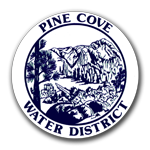December Billing
December billing went out this week. If you get emailed bills, you should’ve already received yours.
This months mailed billing includes our Winter Newsletter with updates and local resources and Winterizing Tips. In case you don’t get the paper mailing, I’ve attached those items here – December Billing Inserts
Water bills are mailed around the 1st of the Billing Month (even months). All bills are due and payable by the 1st of the following month (odd months). Any bill not paid by the due date will be termed delinquent and subject to a $15.00 late fee and/or termination. If shut off, a reconnect fee of $75.00 will be charged, in addition to the current amount due, to re-establish service.
There are several ways to pay your bill. ACH Auto Draft is a free service; the payment is automatically taken out of your bank account (filled out form required). You can log on to your account online, and pay with a Visa/Mastercard/Discover, or E-check. To register your account online, you will need your account number, and the Municipality Code which is PineCoveWDCA. Go to www.pcwd.org and click the “Billing” tab and the Payment option link. Next, click on the www.ub-pay.com link and register your account from there. You can come into the office and pay by check, cash, or card. One person at a time with a mask. Call with a credit/debit card. Drop payments thru the slot on the front door or mail a check or money order. Please note that there is a convenience fee of $3.00 per hundred dollars charged if using a credit card.

